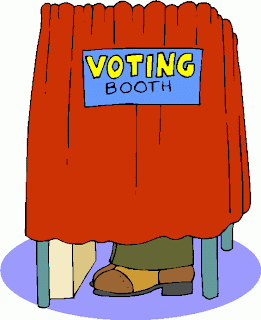 (First published as a community column in The Huntsville Times, January 13, 2008)
(First published as a community column in The Huntsville Times, January 13, 2008)Through a miracle of modern optics, I’ve fooled my brain into thinking that it’s 1984. All is quiet on the Old Age Front. Quiet, that is, as long as I keep my head completely still and my eyes perfectly centered through my progressive addition “no-line” bifocals.
For those under the age of forty and therefore clueless, I’m referring to the malady that I call The Heartbreak of Presbyopia (from the Greek, meaning “old eyes”).
Basically, the lenses inside your eyes grow stiff with age and can no longer flex to focus for near vision. This results in a perpetual browache, forehead furrows deeper than those produced by a John Deere tractor and the tendency to read with outstretched arms, or else, to set reading material on the ground.
You’d think that a battle-hardened optometrist like me wouldn’t be bothered by such cold, hard facts of anatomy and physiology. But the onset of presbyopia has been no less severe for me than for the average patient sitting in my exam chair.
Sure I’ve been prescribing glasses for years, but there is no way some wet-behind-the-ears optometrist in his late twenties can possibly relate to the emotional and physical anguish that is presbyopia. In fact, in my youthful ignorance, I often viewed my distraught, hand-wringing patients coming in for their first bifocal as a little, well, whiny.
Recently, though, karma and middle age finally caught up with me. I had to give in and get behind the phoropter, that machine with the multitude of lenses that makes you look like Darth Vader on a bad mask day.
Yep, that’s right; most of us eye doctor types do our own. We even ask ourselves The Big Question: “Which is better, one or two?” We, too, break out in a cold sweat and suffer palpitations when the choices get too close too call.
There, feel better now?
It's true that if you pony up the major bucks and get a no-line bifocal, your friends may not be able to guess that you’re somewhere on the far side of forty. In fact, it may seem like the perfect ruse.
But remember: “There ain’t no such thing as a free lunch.” Along with the flattering deception comes the fact that you must now become a walking bobble-head doll, constantly turning and nodding your head to keep your eyes centered in the “sweet spot,” or channel of clear vision that runs through middle of the lens.
If you make the mistake of turning your eyes like God intended you to, then life suddenly becomes more precarious. The distortion that you get through the edge of your average no-line bifocal lens causes blurry peripheral vision.
I discovered this immediately as I backed out of my spot in the parking lot after putting my new glasses on for the first time. As I looked over my right shoulder, the cars behind me suddenly began to dance merrily around in a mirage-like shimmer, taunting me like a gang of infernal demons from some Dantean tableau.
It's also good to remember that normal peripheral vision evolved for a good reason and has important survival value, such as the ability to detect and avoid that large Mack truck which may be hurtling toward you as you cross the street at the corner of Governors and Whitesburg. Wearing a no-line bifocal may lead to the following scenario:
Cop # 1: “Say, how old do you think that stiff is over there who just got steamrolled by that semi?
Cop # 2: “Um, I’m not sure, but he can’t be over 40 because there’s no bifocal line in his glasses.”
Actually, the distortion isn’t nearly as noticeable now, and I no longer have to throw back a fistful of ibuprofen in order to get rid of that pesky browache.
Ah, sweet surrender!
But from now on, I think I’ll be a little more sympathetic when my patients come in for their first bifocal. Since I’ve experienced The Heartbreak of Presbyopia firsthand, the chickens have finally come home to roost. Here sits one bespectacled Foghorn Leghorn who's learned to eat a little crow.
©2008 Dr. Michael Brown/20/40-Something. All Rights Reserved.













